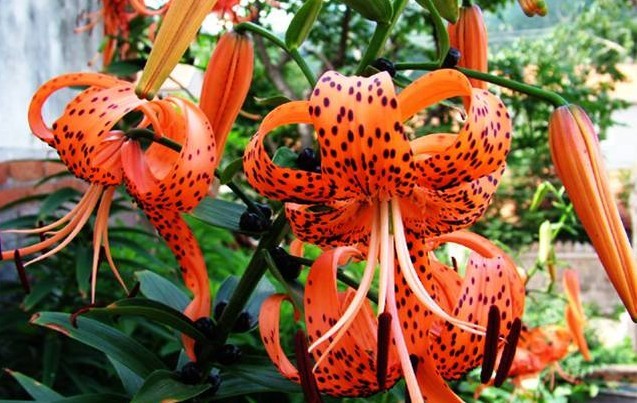Lilium lancifolium (syn. L. tigrinum) is a species of lily native to northern and eastern Asia, including Japan. It is one of several species of lily to which the common name Tiger lily is applied, and is the species most widely known by this name.
It is cultivated in Asia for its edible bulbs. It is also grown as an ornamental plant for its bold flowers, and has become naturalised in parts of North America.
While most parts of the plant are edible for humans, the pollen is considered poisonous. All parts of the plant are toxic to cats, resulting in kidney failure in a few days after eating it.
A new glycerol glucoside, lilioside C, has been isolated from the leaves and stems of Liliumlancifolium. Its structure including the configuration of the aglycone moiety has been elucidated by chemical and spectroscopic means and by its synthesis.
| Catalog | Product Name | CAS Number | Manual |
|---|---|---|---|
| CFN99514 | Colchicine | 64-86-8 | |
| CFN98117 | Beta-Carotene | 7235-40-7 | |
| CFN97326 | Stigmasterol | 83-48-7 | |
| CFN98000 | Stigmasterol glucoside | 19716-26-8 | |
| CFN99916 | Beta-Sitosterol | 83-46-5 | |
| CFN98713 | Daucosterol | 474-58-8 | |
| CFN99515 | Diosgenin | 512-04-9 | |
| CFN99516 | Dioscin | 19057-60-4 | |
| CFN98156 | Ophiopogonin D | 41753-55-3 | |
| CFN98049 | Berberine | 2086-83-1 |
A unique collection of 22 natural compounds from Glycyrrhiza glabra L.
A unique collection of 21 natural compounds from Humulus lupulus
A unique collection of 24 natural compounds from Pteris semipinnata L.
A unique collection of 31 natural compounds from Rauvolfia verticillata (Lour.) Baill.
A unique collection of 28 natural compounds from Garcinia cambogia





